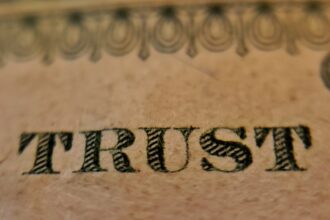When I first considered selling my car, I found myself reflecting deeply on the reasons behind this decision. It wasn’t just a matter of wanting to upgrade to a newer model or needing extra cash; it was about understanding my current lifestyle and how my vehicle fit into it. I realized that my daily commute had changed significantly, and the car that once served as a reliable companion was now more of a burden.
The rising costs of maintenance and fuel were also weighing heavily on my mind. I had to ask myself whether the car was still a necessity or if it had become an unnecessary expense. Moreover, I began to think about my long-term goals.
Was I saving for a house, or perhaps planning to travel? Selling the car could free up funds that would allow me to invest in experiences or assets that aligned more closely with my aspirations. This introspection helped me clarify my motivations and solidify my decision to sell.
Understanding these reasons not only made the process easier but also gave me a sense of purpose as I moved forward.
Key Takeaways
- Understanding the reasons for selling the car can help in setting realistic expectations and goals for the sale.
- Identifying the current value of the car through market research is crucial for determining a fair selling price.
- Cleaning and making necessary repairs to the car can significantly increase its appeal to potential buyers.
- Determining a fair selling price for the car is essential for attracting potential buyers and closing the sale.
- Creating an effective listing with attractive photos and detailed information can help in attracting potential buyers and closing the sale.
Researching the Market: Identifying the current value of the car
Once I had made the decision to sell, the next step was to research the market to determine the current value of my car. I started by browsing online platforms that specialize in vehicle sales, such as Kelley Blue Book and Edmunds. These resources provided me with valuable insights into what similar cars were selling for in my area.
I took note of factors like mileage, condition, and any additional features that could influence the price. This research was crucial, as it helped me set a realistic expectation for what I could potentially earn from the sale. In addition to online resources, I also reached out to local dealerships to get appraisals.
While I knew that selling privately would likely yield a better price, I wanted to understand how much a dealer would offer. This gave me a broader perspective on the market and helped me gauge whether I was being realistic in my expectations. By gathering this information, I felt more confident in my ability to price my car appropriately and attract serious buyers.
Preparing the Car for Sale: Cleaning and making necessary repairs

With a clear understanding of my car’s value, it was time to prepare it for sale. The first step in this process was giving it a thorough cleaning. I spent an entire weekend vacuuming the interior, wiping down surfaces, and even shampooing the carpets.
A clean car not only looks more appealing but also gives potential buyers the impression that it has been well cared for. I also took the time to wash and wax the exterior, ensuring that it shone brightly under the sun. In addition to cleaning, I knew that making necessary repairs was essential for maximizing my car’s value.
I took a close look at any minor issues that could deter buyers, such as scratches or small dents. I decided to fix a few of these imperfections myself, while others required professional help. Investing in these repairs ultimately paid off, as they made my car more attractive and justified a higher asking price.
By putting in this effort, I felt more confident that I was presenting my vehicle in the best possible light.
Setting a Realistic Price: Determining a fair selling price for the car
| Factors | Metrics |
|---|---|
| Car Make and Model | Toyota Camry |
| Year of Manufacture | 2018 |
| Mileage | 30,000 miles |
| Condition | Good |
| Market Demand | High |
| Comparable Listings | 10 similar cars |
After preparing my car for sale, it was time to set a realistic price. This step required careful consideration of all the information I had gathered during my research phase. I took into account the market value, the condition of my car, and any recent repairs or upgrades I had made.
It was important for me to strike a balance between being competitive and ensuring that I wouldn’t undersell myself. I decided to list my car slightly above the average market value, allowing room for negotiation while still being reasonable. This strategy would attract buyers who were looking for a good deal but also give me the flexibility to negotiate down if necessary.
Setting this price was not just about numbers; it was about valuing my car based on its history and the memories attached to it. Ultimately, I wanted to feel satisfied with the sale, knowing that I had made a fair decision.
Advertising the Car: Creating an effective listing to attract potential buyers
With everything in place, it was time to create an effective listing to attract potential buyers. I knew that a well-crafted advertisement could make all the difference in generating interest. I started by taking high-quality photos of my car from various angles, ensuring that both the exterior and interior were well represented.
Good lighting and a clean background helped showcase its best features. In addition to visuals, I focused on writing a compelling description that highlighted not only the specifications but also the unique selling points of my vehicle. I included details about its maintenance history, any recent upgrades, and why it had been such a reliable choice for me.
By being honest and transparent about its condition, I aimed to build trust with potential buyers right from the start. This approach not only made my listing stand out but also attracted serious inquiries from interested parties.
Negotiating with Potential Buyers: Handling offers and counteroffers

As inquiries began rolling in, I found myself entering the negotiation phase—a process that can often be daunting for many sellers. However, I approached it with an open mind and a willingness to engage in constructive dialogue with potential buyers. When someone expressed interest in my car, I made sure to respond promptly and professionally, providing any additional information they requested.
During negotiations, I remained firm on my asking price but was also prepared for counteroffers. It was essential for me to listen carefully to what buyers were saying and understand their perspectives. This allowed me to gauge their level of interest and adjust my responses accordingly.
If someone offered less than my asking price, I would explain why I believed my price was justified based on market research and the condition of the vehicle. Ultimately, this back-and-forth communication helped me reach an agreement that felt fair for both parties.
Completing the Sale: Finalizing the transaction and transferring ownership
Once we reached an agreement on price, it was time to finalize the sale—a step that brought both excitement and relief. To ensure everything went smoothly, I prepared all necessary documentation ahead of time, including the title transfer and bill of sale. This preparation not only streamlined the process but also demonstrated professionalism to the buyer.
On the day of the transaction, we met at a public location where we could safely exchange payment and complete paperwork. As we went through each document together, I felt a sense of accomplishment knowing that I had successfully navigated this process from start to finish. After handing over the keys and saying goodbye to my car, there was an undeniable sense of closure as well as anticipation for what lay ahead.
Dealing with Emotions: Coping with the emotional attachment to the car
While completing the sale brought relief, it also stirred up unexpected emotions within me.
As I handed over the keys, I felt a pang of nostalgia wash over me.
To cope with these emotions, I took some time to reflect on all those experiences rather than focusing solely on what I was losing. I reminded myself that selling the car was a step toward new opportunities and adventures in life. By acknowledging my feelings and allowing myself to grieve this chapter’s end, I found solace in knowing that change often leads to growth.
Considering Alternative Options: Exploring other ways to regain losses
As I adjusted to life without my car, I began exploring alternative options for transportation that could help me regain any financial losses from selling it. Public transportation became an appealing choice; it offered convenience without the burden of maintenance costs or insurance premiums. Additionally, rideshare services provided flexibility when needed without committing to ownership.
I also considered investing in a bicycle for short trips around town—an eco-friendly option that would keep me active while saving money on gas and parking fees. These alternatives not only helped fill the void left by my car but also encouraged me to embrace new experiences and explore different aspects of my community.
Learning from the Experience: Reflecting on the process and lessons learned
Looking back on this entire experience, I’ve come to appreciate all that I’ve learned throughout the process of selling my car. From assessing my motivations to navigating negotiations and ultimately completing the sale, each step taught me valuable lessons about decision-making and self-awareness. I’ve learned how important it is to be informed when making significant financial choices and how preparation can lead to successful outcomes.
Moreover, I’ve gained insight into managing emotions during transitions—recognizing that it’s natural to feel attached but also essential to embrace change as part of personal growth. This experience has equipped me with skills that will undoubtedly serve me well in future endeavors, whether related to vehicles or other aspects of life.
Moving Forward: Planning for the future and adjusting to life without the car
As I move forward into this new chapter without my car, I’m excited about what lies ahead. I’ve taken this opportunity not only to reassess my transportation needs but also to reevaluate other areas of my life where change might be beneficial. With newfound freedom from car-related expenses, I’m considering investing in experiences—traveling more or taking up hobbies I’ve always wanted to explore.
Adjusting to life without a car has opened up new possibilities for me; I’ve discovered local gems within walking distance and formed connections with neighbors through shared transportation options like carpools or bike rides together. While there may be challenges along the way—like coordinating schedules or adapting to different modes of transport—I’m embracing these changes with an open heart and mind. In conclusion, selling my car has been an enlightening journey filled with self-discovery and growth.
From understanding why I needed to sell it in the first place to navigating every step of the process successfully, I’ve emerged with valuable insights that will guide me as I continue forward into this new phase of life—one where I’m excited about what lies ahead without being tethered by ownership responsibilities.
In the article “I Sold Her Car to Recoup My Losses,” the author delves into the complexities of personal finance and the difficult decisions one must sometimes make to stay afloat. A related piece that further explores the theme of financial decision-making can be found on the same platform. You can read more about similar dilemmas and insights in this related article on the website.
THIS IS CRAZY! Wife Demanded Cash From Me For Her Ex; So I Sold Her Car For Cash
FAQs
What is the article “I sold her car to recoup my losses” about?
The article “I sold her car to recoup my losses” is about a person who sold someone else’s car in order to recover money that was owed to them.
Why did the person sell the car?
The person sold the car in order to recoup financial losses that were incurred due to the other person’s actions.
Was the sale of the car legal?
The legality of the sale of the car would depend on the specific circumstances and the laws in the relevant jurisdiction. It is advisable to seek legal advice in such situations.
What are the potential consequences of selling someone else’s car without their permission?
Selling someone else’s car without their permission could lead to legal consequences, including potential civil and criminal liabilities.
What should someone do if they are owed money by another person?
If someone is owed money by another person, they should consider seeking legal advice and exploring their options for recovering the debt through legal means, such as through small claims court or by engaging a collections agency.




